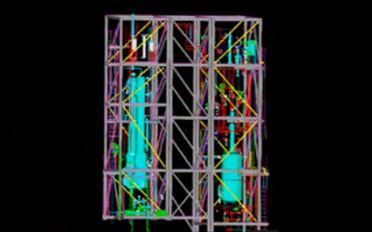 How do you successfully design a distillation column? Generally speaking, there are five major steps that have to happen in any industrial distillation column design:
How do you successfully design a distillation column? Generally speaking, there are five major steps that have to happen in any industrial distillation column design:
- Vapor-liquid equilibrium analysis
- Establish column operating objectives
- Determine your operating pressure or vacuum conditions
- Conduct R/Dmin, Nmin and Feed stage estimation
- Determine the diameter and height of the column
How to complete each of these steps, is detailed by distillation expert, Terry Tolliver in our blog, A Stepwise Procedure for Continuous Distillation Column Design.
10 Checks for Distillation Column Design
Today, we offer some key things to check to make sure your design is on track. Below are some things to double-check when you get a preliminary model of your distillation column:
- Let’s start with the basics. Have you selected the right type of distillation system for your process? Consider the number of chemicals you need to separate and how many stages this will require. A fractionating column is appropriate for separating several components in one column. A continuous distillation system maintains a steady state and is usually used to separate one chemical of interest. Other types of distillation include: steam distillation, vacuum, zone, reactive distillation, catalytic, azeotropic distillation, prevaporation, flash, freeze and extraction distillation. Have you selected the system type that is most appropriate for your separation goals?
- Did you use the correct activity coefficients when determining volatility? If you are estimating this yourself, it is always a good idea to double-check with some outside sources. Calculating your coefficients correctly is critical.
- Does the pressure or vacuum you selected allow an appropriate temperature difference between the distillation process and the utility processes that must occur within the distillation column? Cooling water, steam supply, hot oil systems, these will all have a bearing on your column operations. Atmospheric or pressure operation of a column is usually less expensive, but vacuum distillation can be more energy efficient.
- Is your process heat sensitive? If the answer is yes, go back and verify your pressure requirements. You may have to operate at a lower pressure to avoid discoloration, fouling or decomposition.
- Is your reflux ratio approximately 1.2 times the minimum reflux ratio? If yes, you have probably selected the optimal number of stages and the correct feed location. If no, consider if the trade-off between utility usage and the number of stages is optimal.
 Do you have an appropriate superficial vapor velocity selected? This has a large bearing on the distillation column design for diameter and width
Do you have an appropriate superficial vapor velocity selected? This has a large bearing on the distillation column design for diameter and width- Are your trays spaced correctly? Did you account for flooding, weeping, and poor distribution in your distillation column design? Getting liquid to distribute correctly within the column can be difficult and will affect the purity of your distillation.
- Did you select a packing size appropriate to the column diameter? Smaller diameters can use smaller packing sizes. Packing has an impact on HETP and pressure drops.
- Does your column height include a sump volume that provides approximately 2-3 minutes holdup at 50% level, based on internal liquid flow from the bottom tray?
- Do you have vapor space of two column diameters, or two feet (max), at each liquid/vapor distribution point and above the top tray? The last two items both affect distillation column size requirements and can contribute to less than optimal separation if done improperly.
For more resources on distillation column design, contact EPIC Modular Process today.